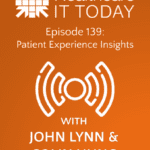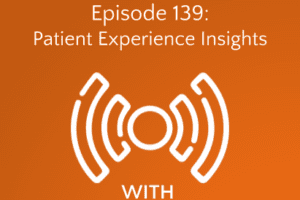The following is a guest article by Tom Romeo, General Manager of Healthcare IT at Quest Diagnostics.
The importance of utilizing Enterprise Content Management to Streamline Digital Health Solutions
Healthcare today is in an epic battle to hire and retain employees. The American Hospital Association estimates that, since February 2020, hospital employment has decreased by nearly 94,000 workers, despite a still-increasing demand for hospital services.
At the same time, the volume of data hospitals and health systems manage is greater than ever. Accurate data indexing, along with appropriate labels and documentation, can affect a hospital’s ability to quickly and accurately service patients.
When it comes to content management, the sheer volume of information captured daily can be daunting.
Health systems of all sizes often feel they may be spending too much time entering and fixing data errors, especially in the lab. [Bowman S. (2013). Impact of electronic health record systems on information integrity: quality and safety implications. Perspectives in health information management, 10(Fall), 1c.] What can hospitals do to manage and make sense of this tidal wave of content amid a massive workforce shortage?
Healthcare Innovation with Content Capture
With a consistent approach, healthcare professionals can increase efficiency, timeliness and legibility, and better consistency and completeness of patient documentation. Ultimately, these benefits can also improve patient care and quality of service. Specifically, Intelligent Data Capture (IDC) is a tool that can help save time and money – and therefore improve care – by innovatively processing, classifying, extracting, validating and routing materials.
As documents enter an organization, it takes time and labor to identify each document type, recognize the information within them and assign identifiers or metadata. For many hospitals, this is a manual process requiring a team of professionals. With staff turnover increasing from 18% to 30% for some departments due to COVID-19 pressures, these are resources health systems may not be able to afford to allocate.
IDC uses supervised machine learning technology to accelerate both digital and manual processes. As one example, advanced search capabilities can help identify trends or patterns in documentation and reduce blind spots. So, utilizing tools like Intelligent Data Capture can help an organization automate their workflow in a way that not only saves time and money, but also reduces error – a critical benefit with resources so strained, and something that can lead to improved patient care.
Health systems must consider that their solutions should be customized and collaborative to fit seamlessly within the existing processes. When evaluating vendors, it is important to look at things like stability, compatibility and quality, and to seek out a partner that provides tailored training along with strong service and support. Having a trustworthy team ready to respond and seek resolutions quickly is vital in the fast-paced, post-COVID environment many health systems are experiencing.
Health systems should also beware of focusing on immediate gains and losing sight of HIT’s far-reaching impact. Things like the long-term value of a solution and the delivery of new technology from the vendor are also important to keep in mind. Looking for a partner with a solid vision and road map will only benefit in the long run, whereas if these pieces are not considered, it is unlikely that a solution will operate at its full potential in assisting with productivity and readiness.
Using IDC in Minnesota to Save Time and Reduce Error for CentraCare™
When used correctly, certain tools can improve health systems a significant amount. Powered by Ephesoft, as part of Quest Diagnostics’ Quanum® Enterprise Content Solutions, Intelligent Data Capture has enabled several health systems and their health services networks to reduce errors and respond to a drastic increase in volume of lab requisitions due to the COVID-19 pandemic.
One large health system that specifically benefitted from employing this solution was CentraCare™ in Minnesota. As one of the state’s largest health systems, CentraCare’s 27 hospitals and facilities create various types of documents every day, including patient self-assessments and consent waivers.
With so much information sent both internally and externally, bulk scanning without processing key indexing values had become labor-intensive and time-consuming for the CentraCare team. The work was also prone to errors that required manual resolution. Additionally, the variety and complexity of the materials in question occasionally created issues requiring review, culminating in a desire to replace these processes with a more efficient workflow to save time across a busy staff.
The IDC technology CentraCare introduced created a new automated content intake process, ultimately reducing time needed for preparation, ingestion and review. With the elimination of 3 hours per site weekly through this bulk batch class, CentraCare was able to allocate that time to other areas within the department that were experiencing backlog, saving a total of 9 hours per week.
Conclusion: Evolving Data Strategy is Critical for Future Success
The International Data Corporation reports that data is growing at a rate of 10x per year. By 2025, it is estimated that the global datasphere will have over 160 zettabytes of data worldwide, making it critical for organizations to address growth and management. Additionally, many across the industry continue to predict an increase of data challenges, underlining the importance of considering an IDC system.
At the same time, an analysis of EMSI data found there will be a critical shortage of 3.2 million health care workers by 2026, amplifying the magnitude of staffing challenges the field, namely hospitals and health systems, is facing. As demand continues to rise, technology that saves time and money while reducing error is a needed resource to supplement the workforce’s efforts.
Introducing tools like Intelligent Data Capture is the first step to digital transformation and the key to building a comprehensive picture that aggregates information from disparate sources. As patient, customer, vendor and employee demands continue to increase, it is necessary for healthcare organizations to evolve their data strategies to meet goals created by the shifting landscape of healthcare. COVID-19 and its aftereffects have proven how necessary it is for organizations to be prepared for anything – and an unpredictable future of data and content management is sure to be only the tip of the iceberg.
About Tom Romeo
Tom Romeo is the General Manager of Healthcare IT at Quest Diagnostics. In this role, he leads the Quest commercial software business, which includes Quaum Enterprise Content Solutions and Quanum Practice Solutions. He has been with Quest for 27 years, and most recently led the company’s Business Relationship, Demand Management, and Product Management organizations. For more information, please visit Enterprise Content Management | Quest Diagnostics.













